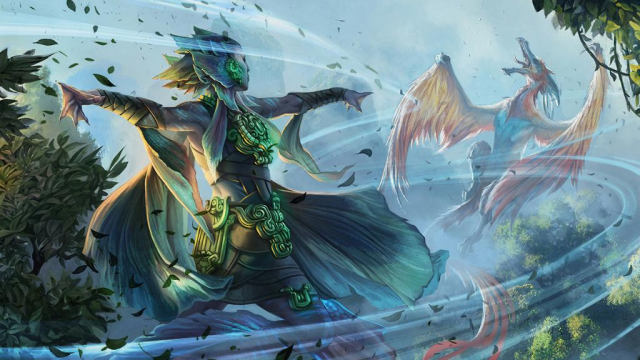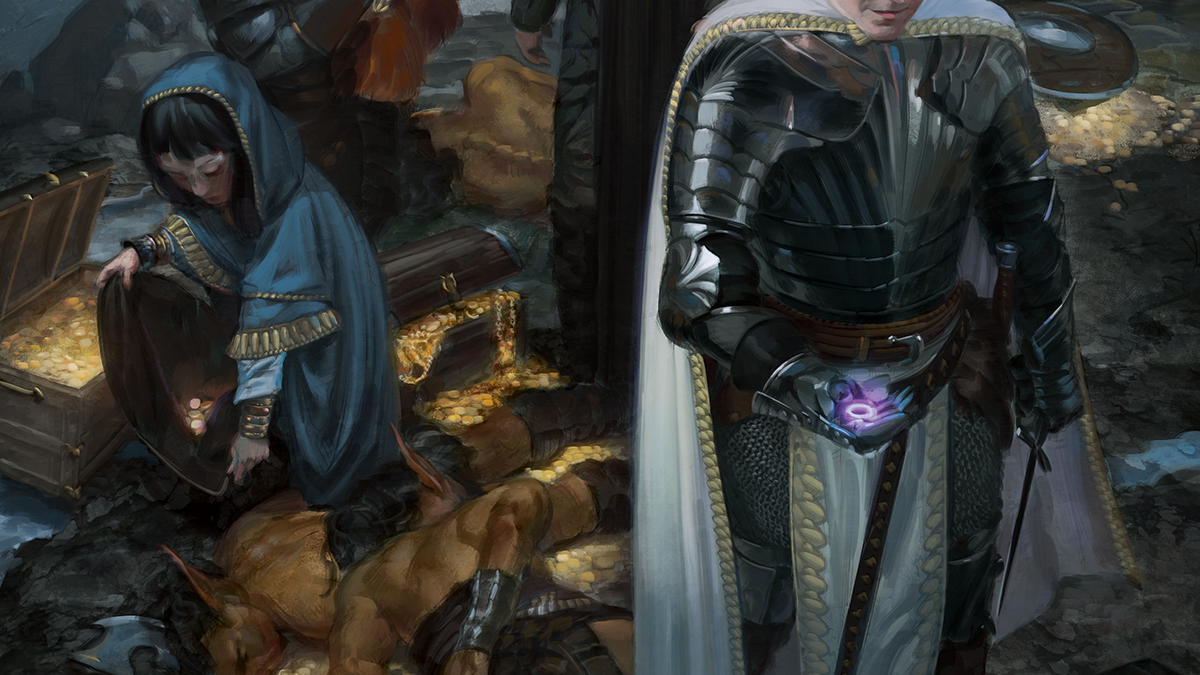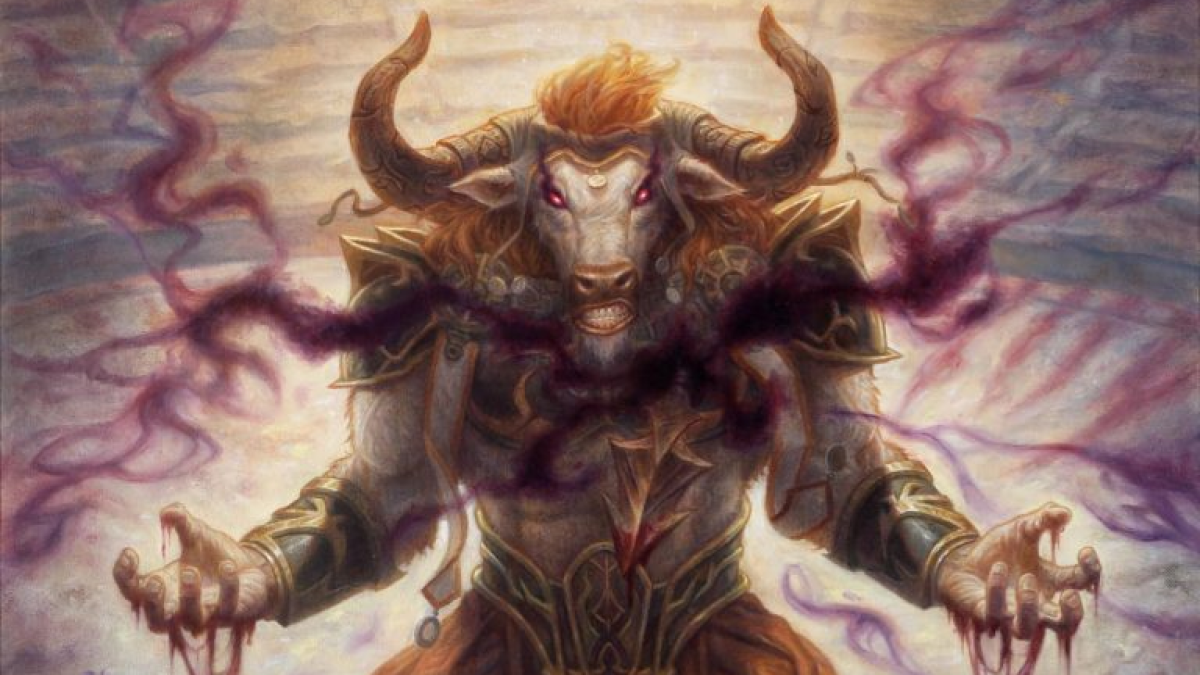Environmental rules rarely come up in DnD 5E, and they’re always a hassle to work through. Since most of DnD 5E takes place in forests, rocky terrain, or something similar, you rarely need to know these specific rule types.
However, whether you need a refresher or are currently drowning and want a quick refresher, this will serve as a compendium for the most common environmental rules you might run into.
The DM’s word will always supersede these, though, so be sure to talk to your DM if your game plan revolves around something like suffocation or falling damage.
Climbing and swimming in 5E

By default, you halve your walking speed while swimming or climbing to determine your swim or climb speed in 5E. You ignore this penalty while you have a swim or climb speed. You can swim in any direction, but while underwater, you must hold your breath or risk suffocation, unless you have an ability that lets you breathe underwater. At the DMs discretion, you may need to roll Athletics checks to move through difficult handholds.
This restriction stacks with difficult terrain, so swimming or climbing through difficult terrain cuts your speed by a third. If you have 30 speed and want to swim through a whirlpool, for example, you can only move 10 feet per movement.
Falling
If you lose your grip and start to fall, you have some things you can do. Losing your grip during a climb can cause you to start falling. You fall 500 feet per round, which usually means you instantly hit the ground. When you do so, you take 1d6 bludgeoning damage per 10 feet you fell, to a maximum of 20d6 damage.
A fall of 200 feet deals an average of 70 damage, meaning some characters at mid or high levels can survive a seemingly endless fall. The damage also gets halved if you fall into water with a DC 15 Athletics or Acrobatics check, making many falls much easier to live through.
In some cases, if an effect would knock you off of a cliff that you are climbing, your DM may allow you to make a check to catch the ledge. If they do so, this check could be Athletics, Acrobatics, or a Dexterity saving throw.
Can you climb and use weapons?—explained
By default, you must use your hands to climb. To use a weapon and still be able to climb, you must have at least one hand available. Even creatures with climb speeds tend to need their hands to access their speed.
Unlike underwater rules, climbing and fighting is left quite vague. Different tables will have different rulings. For instance, if a Tabaxi—a race with a natural climb speed—is climbing a wall and wants to hang off of it by her claws to shoot a bow, some DMs might say that’s fine. Others might not.
In general, rewarding creativity and preparedness is good. For example, if you are using a rope that you can tie to a belt to stabilize yourself while climbing, DMs will likely let you use both hands to fight by using your free inventory access for the turn.
However, not dedicating yourself to the climb will probably leave you wide open. Attacks against a creature that is climbing without a climb speed will often have advantage, especially if they’re dedicating hands to holding weapons.
Fighting while underwater
If you get into a fight underwater, melee attacks have disadvantage unless you have a swimming speed or if the weapon is a Dagger, Javelin, Shortsword, Spear, or Trident. In addition, range attacks can only be made within the first range increment and have disadvantage unless they are Crossbows, Nets, or a Thrown Weapon that is similar to a Javelin, such as a Trident. Magic is almost unaffected by water, though anything in the water has resistance to Fire damage.
A few rules, huh? Swim speed nullifies the disadvantage on melee attacks but not ranged attacks, so your Lizardfolk can use a Maul without disadvantage, but their Longbow would keep the disadvantage.
A caster can theoretically cast spells while underwater, but they may not be able to fulfill any Verbal components of the spell without help or the ability to breathe underwater. You can still cast spells from the surface of the water and target monsters in the water, as long as the water isn’t opaque.
Drowning and Suffocation

A character can hold their breath for one minute, plus one minute per Constitution modifier before they start suffocating. Once they do, they have a number of rounds equal to their Constitution modifier to find air. After that time, they drop to zero hit points and must start making death-saving throws, unable to stabilize or heal until they can breathe.
For example, Zoe has 16 Constitution and is underwater. She has four minutes, or 40 rounds, of breath before she starts suffocating. Then, she has three rounds to find air. If she fails to do so, she goes to zero hit points and has to start making death saves.
Even if Zoe makes three successful death saves, she can’t stabilize or heal until she can breathe again, even through magic like Heal. If she is brought to the surface while she has three successes, she immediately stabilizes.
Special magic or other methods of holding a target’s mouth open might prevent a target from holding their breath.
Zero Gravity in 5E

While in zero gravity, creatures cannot move without some kind of flying speed. They can still attack with melee and ranged weapons, as well as spells, normally.
Moving in zero gravity, or even through effects like the Reverse Gravity spell, is basically impossible. Without magical aid, you need to kick off of another surface or object. This will typically be an Athletics check which moves you in a straight line. Depending on the DM, this could be a basic movement, an action, or a bonus action; there are no clear rules here. Alternatively, a creature can climb along a wall as if they were climbing.
However, magical flight like the Fly spell ignores this. Depending on how your DM determines the gravity-altering effect, non-magical flight might not be effective. Flight requires you to move air around, after all. So, if you’re in space, flapping your wings might not be enough.
Extreme weather effects in 5E
Extreme weather in 5E refers to non-habitable temperatures or areas that most creatures are not designed to live in. This includes areas like deserts, volcanos, or tundra. Notably, these effects can be partially or fully negated through proper shelter, clothing, or magical aid.
Extreme heat or cold
When the temperature is above 100 degrees Fahrenheit or below zero degrees Fahrenheit, extreme temperature kicks in. In these conditions, a creature must make a Constitution saving throw or gain levels of Exhaustion, though there are ways to guarantee make the saving throw.
For heat, the DC starts at five. Every additional hour raises the DC for the Constitution saving throw by another one. Drinking water and resistance or immunity to fire can allow you to automatically save against the DC, while wearing heavy armor or clothing gives you disadvantage on it.
For cold, the DC is always 10, though you still make the save at the end of each hour. Having resistance or immunity to cold damage lets you succeed the saving throw naturally, as well as having cold weather gear or just being adapted to the climate.
High altitude

Once you reach 10,000 feet above the ground, you have less oxygen. Every hour of travel at above 10,000 feet counts as two hours for how long you can travel without becoming exhausted.
You can ignore this penalty by spending a month at a high altitude. This only works up to 20,000 feet; at that point, you need to be native to those altitudes. That means you need to be a creature that naturally enjoys tall mountain peaks, such as some Giant races.
Standing on ice
Walking across ice is difficult terrain and halves your speed. If you walk onto it, you must make an Acrobatics check or fall prone. If the ice is thin, it can only support a certain amount of weight per 10 square feet—an average of about 165. After that point, the ice breaks and people fall into frigid water.
Ice is annoying to walk across since each round will ask you for an Acrobatics check. Some specific items, like spiked shoes, may allow you to circumvent this.
Thin ice, however, should be avoided entirely, as few adventurers will be below 165 pounds and be safe to walk across. Falling into cold water isn’t too bad, since you can last a number of minutes equal to your Constitution score—not modifier—before getting frostbitten. After that, you’ll start taking levels of exhaustion without making DC 10 Constitution saving throws.
Strong wind

While within a strong wind, creatures have disadvantage on ranged weapon attack rolls and Perception checks that rely on hearing. Flying creatures not fueled by magic must land at the end of their turn or start to fall. In specific scenarios, strong winds might block sight, providing disadvantage on Perception checks that rely on sight and potentially causing attacks to miss.
Strong winds most negatively affect ranged weapon attacks. Typically, they do not hamper spell attack rolls or melee attacks, so your Ranger is going to be the only person really affected.
However, depending on the ferociousness of the wind, you might be in more trouble. A higher wind speed might move members of the party in a specific direction, like the effect of Gust of Wind. In these cases, characters might need to make a Strength saving throw to stand their ground or a Dexterity saving throw to grab onto nearby objects. Extreme wind speeds might prevent targeting for spells within a certain distance due to a cover of sand, smoke, or steam.












Published: Nov 3, 2023 07:59 am